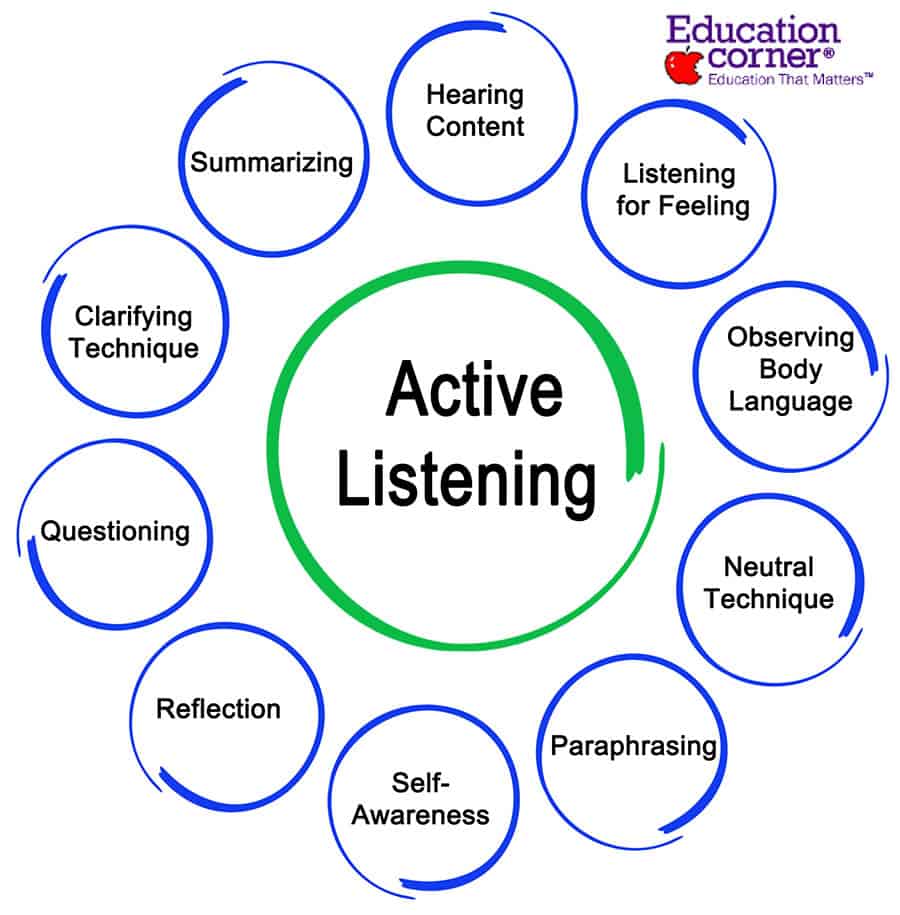

It involves the sensory perception of the sound. the listener is ready and knows that he has to listen. Sensing: Sensing implies being in tune with the speaker, i.e.The process of listening involves four stages: It takes place when the receiver of the message is willing as well as ready to learn or be influenced or changed by the message that the speaker conveys to him. Listening involves the act of carefully hearing the speaker. Listening means paying thoughtful attention to the statement of the speaker.

For the purpose of listening, we need to train our ears and question ourselves, as to why we want to listen to something or somebody. What is Effective Listening?Įffective listening is the one that needs openness of the mind, concentration, and a continuous mental classification and association of the message which is heard.

The lessons are divided into short and targeted slides that only take minutes to accomplish. Then, it goes over different active listening techniques and skills needed to become good at active listening.īuilt with busy employees in mind, this course has been structured to follow the microlearning design model. This course also covers the various types of listening, which is crucial in identifying the different listening styles of your team. It strips down some usable steps on how your staff can listen better and improve their communication. This active listening training course takes a look at the definition of active listening and the advantages of mastering this skill. Improving Your Active Listening SkillsĮdApp’s Improving Your Active Listening Skills course helps you equip your team with various listening strategies and improve their active listening as they communicate with anyone, from their peers to their clients. Even better, you can apply your logo so it matches your company’s branding!Ģ.
#Effective listening training free
Thanks to EdApp’s free authoring tool, you can easily tweak the content and include additional learning resources. The course is made fully editable – for free. It also drills down the barriers to practice active listening alongside some tips to address them. These bad practices include listening to what’s not being said and interacting with a lack of direct eye contact or expression for nonverbal cues. The second half of this course focuses on the bad practices of listening, which must be avoided at all costs. It contains a rundown of the key listening strategies that can help enhance their communication and relationship with their clients. This active listening training course teaches your team the core principles of active listening, which is perfect if they have no fundamental knowledge of this skill. If you’re looking for an interactive training course that will fully engage your team, then EdApp’s Active Listening course is your best bet.


 0 kommentar(er)
0 kommentar(er)
